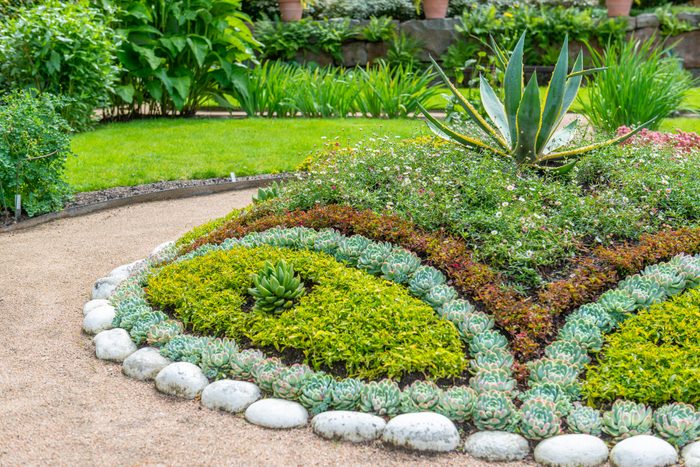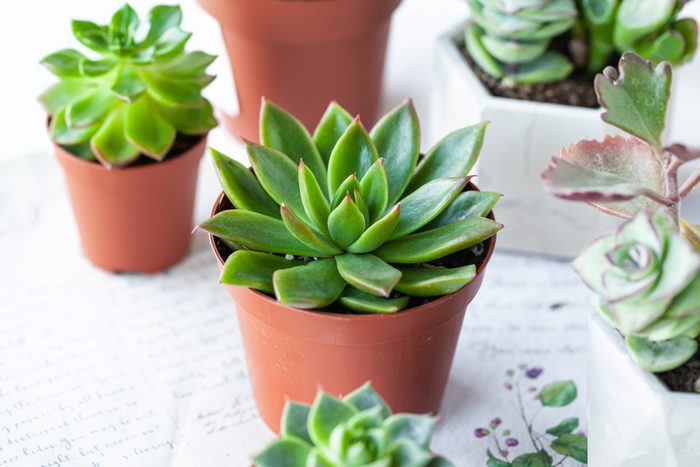
Start With a Potted Succulent, Cutting or Seeds
There are three ways to start your succulent garden: Buy a potted succulent; get a leaf or stem cutting from an existing succulent; or plant seeds. Here what to know about each option:
Potted succulents
Pros
- It’s the quickest and most popular way for beginners to start their collection.
- The plant often comes with care instructions on the label.
- It’s already filled with the correct soil.
Cons
- The most expensive option.
Succulent cuttings
Pros
- Stem cuttings and leaves can be free if family or friends are willing to share.
- Growing from cuttings or leaves takes less time than growing from seeds.
- Stem cuttings purchased online cost less than potted succulents.
Cons
- Time. It takes three to six months for these to produce their first roots.
- Requires rooting hormone to prevent diseases and encourage root growth.
- Some online sellers are not reputable. Look at ratings and read reviews.
Succulent seeds
Pros
- The least expensive way to start. Packets contain 10 to 1,000 seeds.
- Seeds are available for exotic and rare succulents you won’t find elsewhere.
- With patience, seeds are the best method to produce lots of plants for your landscape.
Cons
- It can take seeds up to a year to be large enough to transplant into a bigger pot, where they must grow large enough to plant outside.
- Succulent seeds are tiny, so be careful once you open the packet. A sudden breeze can easily blow them away. I dropped a packet once and lost countless seeds.
- Seed trays and growing pots require indoor space for a long time.
- Seed packets often contain mixed varieties, so you won’t know what they are until they develop leaves.
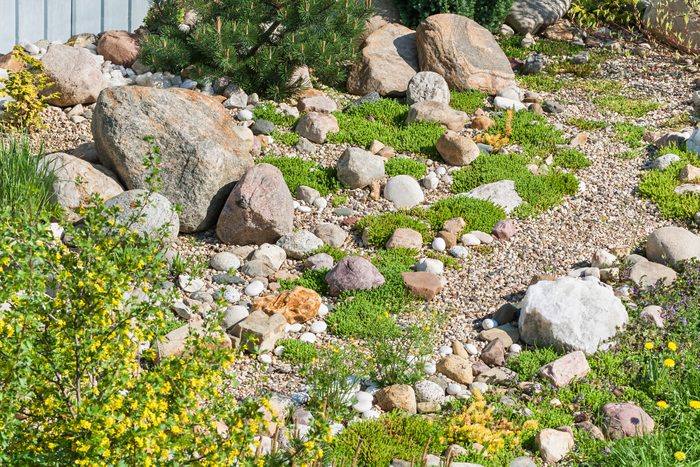
Choose a Favorable Location
Outdoor succulents need three conditions for success:
Bright sunlight to partial shade
- Cacti, aeonium, echeveria, kalanchoe, sedum, Senecio and sempervivum can take full sun (eight-plus hours per day). Other succulents like partial shade, i.e. only four to five hours of sun per day, preferably in the morning.
- Protect succulents from intense afternoon sun.
- Acclimate your new or young succulents to full sun by keeping them shaded for the first few weeks. Every few days, move them closer to the full-sun location. If the leaves start to change color after a few hours, move them back to the shaded site and wait a few days before trying again.
Well-drained soil
- Succulents need dry, well-draining, sandy soil with nutrients and minerals.
- Mix your existing soil with 50% to 60% organic material like tree bark, compost, coir, or potting soil for succulents.
- You can also use a mixture of perlite, pumice and sand.
- Add minerals by mixing in gravel, lava rock, perlite or gritty sand.
Keep it dry
- Watering once a month in the winter and twice a month in the summer is enough.
- If you get ample summer rain, don’t accidentally overwater with automatic irrigation.
- Signs of overwatering: Leaves start to drop, turn yellow, become squishy or start to rot. Whole stems fall over.
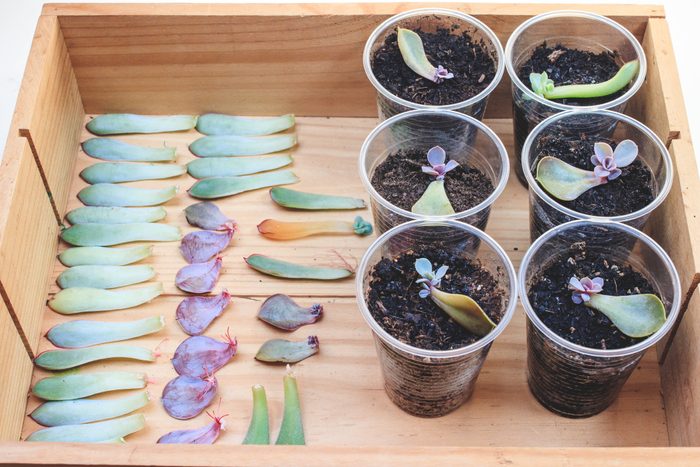
How To Grow Succulents From Stems or Leaves
Succulents are easy to grow from a leaf or cutting from their stems. Here’s how:
- Take a three- to five-inch long leaf or cutting and air dry it for two to three days until it’s firm. The base should harden.
- Dip the base of the cutting into rooting hormone or honey, a natural rooting agent.
- Place cuttings on their side and press lightly into the soil in a seed starting tray with a lid, making sure the dirt covers the base.
- You can also use small clay pots, or egg cartons with a hole in the bottom of each dimple for good drainage.
- Put the lid on the tray and place it in a bright, sunny location.
- Spritz with water once every two weeks to saturate soil, making sure the water drains. Propagating succulents in the winter will require even less water.
- When roots start to develop, take the lid off the tray.
- Your stem cuttings can be planted outside when you tug on them and they won’t easily pull out of the soil.
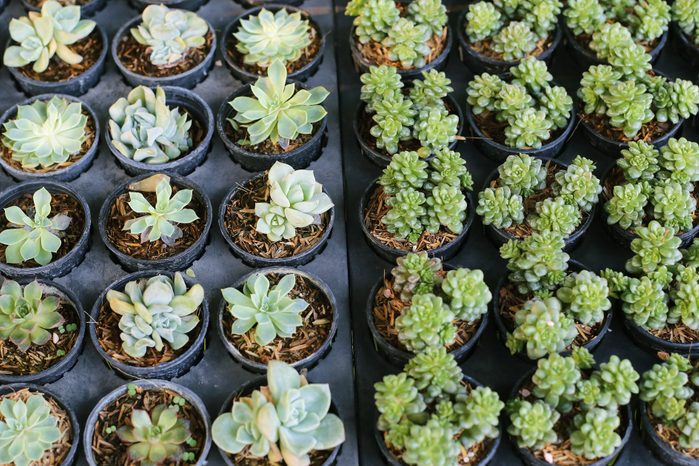
How To Grow Succulents From Seeds
Succulents grown from seeds require patience. Here’s how to do it:
- Fill seed starting trays or pots with soil to an inch below the top.
- Water before planting seeds, making sure the soil drains well.
- Sprinkle seeds onto the soil, one to two inches apart.
- Cover with tray lids or plastic wrap to create a humid environment.
- Depending on seed variety, germination takes up to three weeks.
- Water when roots develop, and afterward only when the soil is dry to the touch.
- Seedlings can die off if the soil is too wet.
- Move your succulents up to a four-inch pot when they are larger than two inches.
- Succulent plants could take up to two years to grow to six to eight inches, or large enough to plant outside. Looking for more tips? Here are a few essential tips to care for jade plants at home.
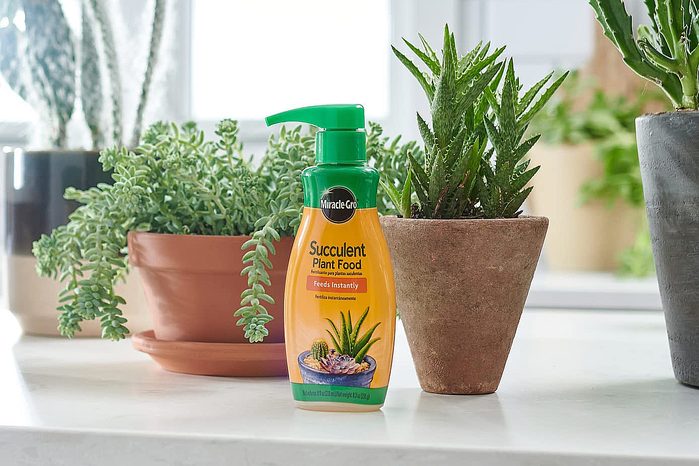
Fertilize and Prune Succulents
Succulents naturally grow slowly. During the warm growing season, encourage growth by applying a fertilizer specifically for succulents and cacti. Follow the label instructions for amounts and frequency.
Another benefit of succulents: There’s no need for pruning. Leaves that are damaged or in decline can be clipped off. If a leaf falls off or detaches from the mother plant, take the “freebie” and propagate another plant.

